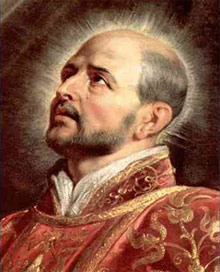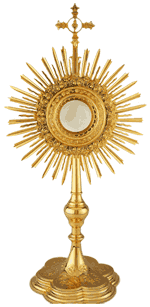
Ignacio López de Loyola was born in Spain in 1491, the youngest of 13 children. In 1506, he adopted the last name “de Loyola” in reference of the Basque city of Loyola where he was born. In 1509, Ignatius took up arms under the Duke of Nájera and participated in many battles without injury to himself. However, on May 20, 1521, in a battle against the French, a cannonball wounded both of his legs. During his recuperation at Loyola, Ignatius read the Life of Christ by Ludolph of Saxony, a commentary on the Gospels with extracts from the works of over sixty of the Fathers of the Church; the book influenced his whole life. Ludolph proposes that the reader place himself at the scene of a Gospel story and visualize the scene in a simple contemplation.
During his recuperation at Loyola, Ignatius read the Life of Christ by Ludolph of Saxony, a commentary on the Gospels with extracts from the works of over sixty of the Fathers of the Church; the book influenced his whole life. Ludolph proposes that the reader place himself at the scene of a Gospel story and visualize the scene in a simple contemplation. He also read the lives of the saints.
When Ignatius left Loyola he had no definite plans for the future, except that he wished to rival all the saints had done in the way of penance. His first care was to make a general confession at the famous sanctuary of Montserrat, where, after three days of self-examination, and carefully noting his sins, he confessed, gave to the poor the rich clothes in which he had come, and put on garment of sack-cloth reaching to his feet. His sword and dagger he suspended at Our Lady’s altar, and passed the night watching before them. The next morning, he retired to a cave near the neighboring town of Manresa, where he retired for prayer, austerities, and contemplation, while he lived on alms.
It was at this time, too, that he began to make notes of his spiritual experiences, notes which grew into the little book of “Spiritual Exercises.”
St. Ignatius spent a number of years studying in Paris, where he became thoroughly versed in the science of education, and learned by experience how the life of prayer and penance might be combined with that of teaching and study. Starting a small society in Paris, the Society of Jesus was approved by the Holy See in 1540. He died on July 30, 1556 and was canonized in 1622.
Currently, the Jesuits are the single largest religious order in the world, numbering nearly 20,000 members, of which nearly 14,000 are priests. They work in 112 nations on six continents.




